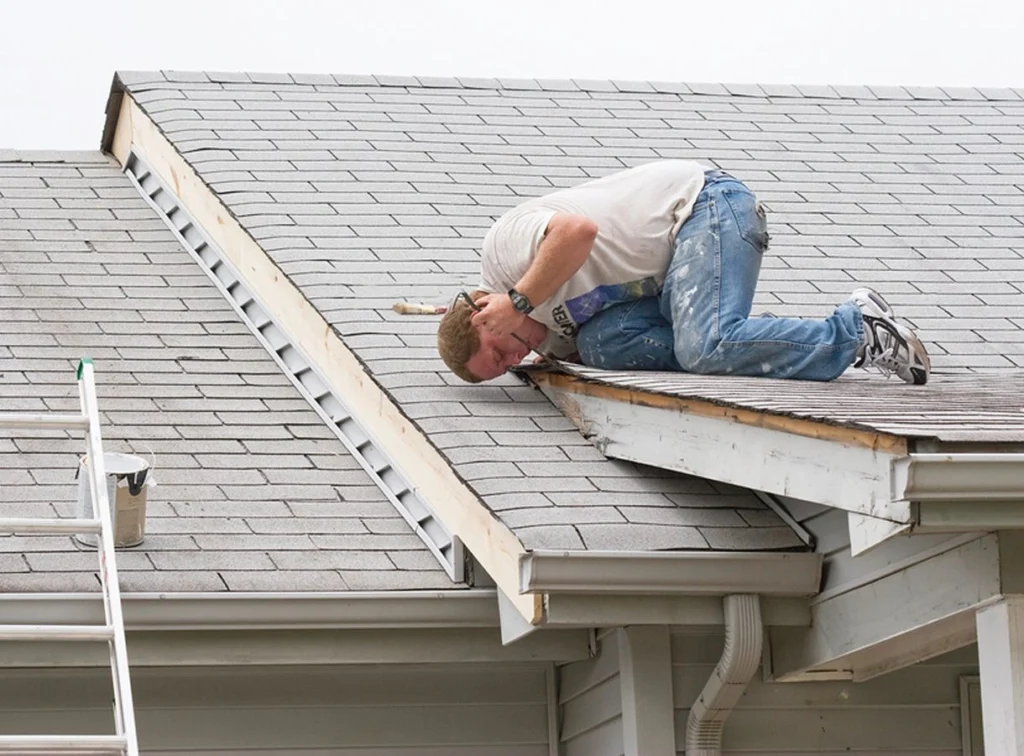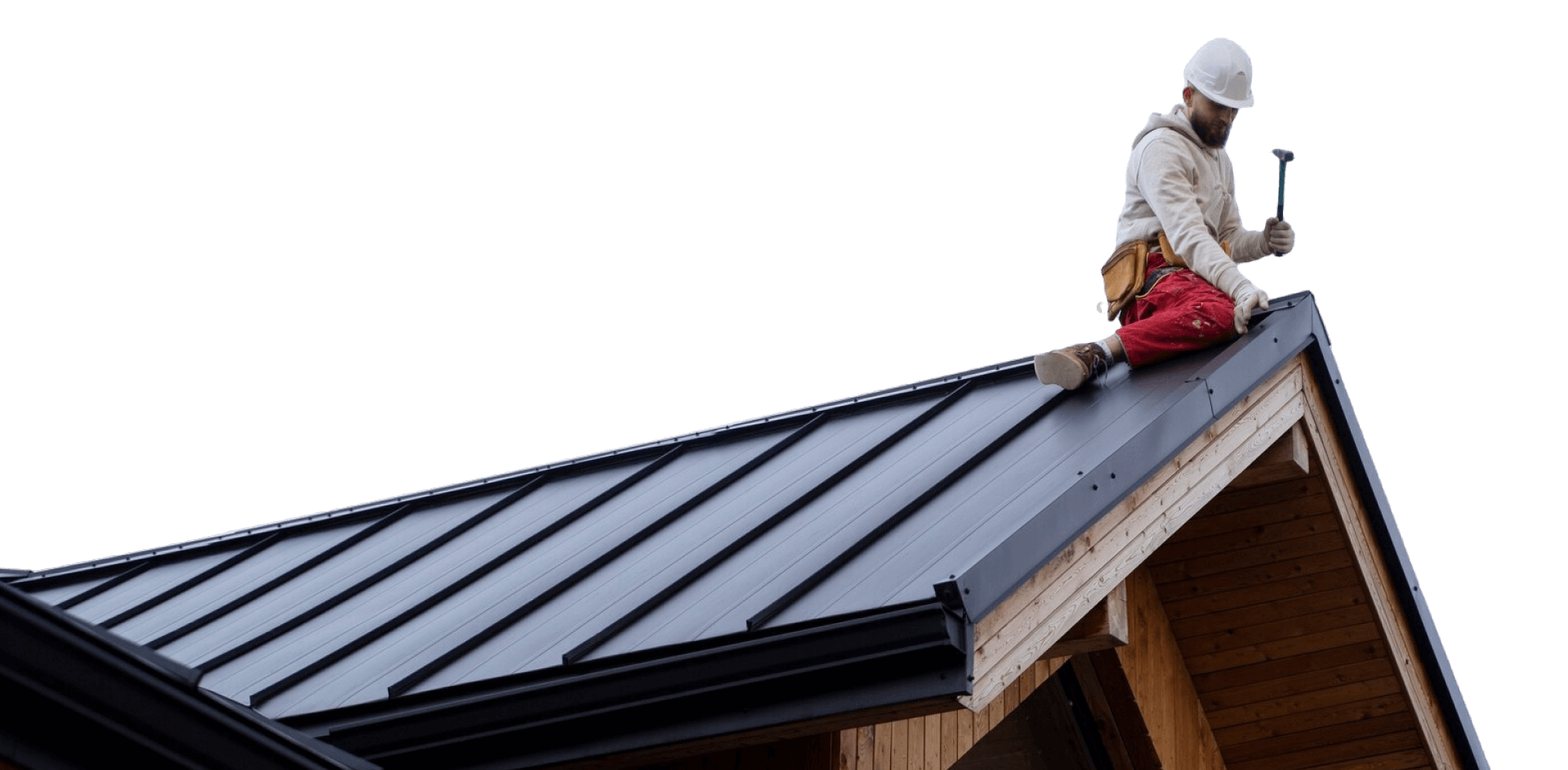Flat roofs are a popular choice for many buildings, especially for commercial properties and modern homes, due to their sleek design and practical use of space. However, just like any roof, flat roofs are susceptible to leaks over time. Repairing a flat roof leak is crucial to prevent further damage to the roof structure and the building’s interior. In this article, we will guide you through How to Repair Roof Leaks on a Flat Roof, the steps to repair a flat roof leak, discuss the best methods and address common questions about sealing and maintaining flat roofs.
Introduction
Flat roofs are often prone to leaks because of their lack of natural slope, which means water can pool in certain areas and create weak spots. These leaks, if not repaired quickly, can lead to more serious issues such as water damage, mold, and weakened structural integrity. It’s essential to act quickly and appropriately when a flat roof leak occurs. Understanding how to properly locate and repair a leak can save you time, money, and stress.

Step 1: Locate the Leak
The first and most important step in repairing a flat roof leak is identifying the source of the problem. Since water can travel along the roof deck, the actual leak might not be directly above the area where the water damage is visible.
How to Find the Leak:
- Check the Interior: Begin by inspecting the building’s interior. Look for signs of water damage, such as stains, discoloration, or dampness on the ceiling or walls. This will give you a rough idea of where the leak originates.
- Inspect the Roof: Once you’ve pinpointed the area, go to the roof and check for visible damage. Look for cracks, punctures, or areas where the roof membrane has lifted. Water can seep through these damaged spots and travel to other parts of the roof deck, so it’s crucial to investigate thoroughly.
Step 2: Clean the Area
Before applying any patching material, it is essential to clean the area around the leak. This ensures proper adhesion of the patch and allows the materials to work effectively.
How to Clean the Area:
- Remove Debris: Clear away any dirt, leaves, moss, or other debris from the area around the leak. Use a broom or pressure washer to clean the surface thoroughly.
- Dry the Surface: Ensure the area is dry before applying any patching material. Moisture can interfere with the bonding process, causing the patch to fail later on.
Step 3: Assess the Damage
Once the area is clean, assess the damage to determine what kind of repair is needed. Flat roofs can experience various types of damage, including punctures, cracks, and separations of seams.
Types of Roof Damage:
- Small Punctures or Tears: These are usually caused by sharp objects or debris falling on the roof. They are typically easy to fix with roofing cement or sealant.
- Cracks and Seam Separations: Over time, the seams where different sections of the roof membrane meet can separate. Cracks and seam failures can lead to leaks if not addressed properly.
- Large Tears or Holes: Larger areas of damage require more extensive repairs, such as applying pre-fabricated roof patches.
Step 4: Choose the Right Repair Material
Selecting the correct repair material is crucial for the long-term effectiveness of the repair. The type of damage will dictate the materials you need to use.
Repair Materials:
- Small Punctures or Tears: Roofing cement is ideal for small punctures or minor tears. It’s easy to apply and forms a strong, waterproof seal.
- Cracks and Seams: For cracks or seam separations, a flexible sealant or caulk works well. These materials expand and contract with the roof’s movements, making them perfect for sealing joints.
- Larger Tears: If the damage is more extensive, using a pre-fabricated roof patch is the best option. These patches are designed to match the existing roof membrane type and provide long-lasting protection.
Step 5: Apply the Patch
Now that you’ve selected the appropriate material, it’s time to apply the patch. The method of application will depend on the size of the damage.
How to Apply the Patch:
- For Small Leaks: Apply a generous amount of roofing cement around the damaged area. Ensure that the cement extends beyond the edges of the damage to create a strong seal.
- For Larger Leaks: Clean the area around the tear, apply adhesive to the patch, and press it firmly into place. Ensure that the patch covers the entire damaged area and overlaps onto the surrounding roof surface.
Step 6: Seal the Edges
After the patch is applied, it is important to seal the edges to ensure a watertight repair. Apply additional sealant around the perimeter of the patch to create a secure, waterproof seal. This will prevent water from seeping underneath the patch and causing further leaks.
Important Considerations
While repairing a flat roof leak is a straightforward process, there are a few important considerations to keep in mind to ensure your repair lasts:
Safety First
Always take proper safety precautions when working on a flat roof. Use a sturdy ladder to access the roof, and if necessary, wear a harness to prevent accidents.
Weather Conditions
It’s best to repair flat roof leaks on dry, sunny days. Rain or excessive moisture can prevent the patching materials from adhering properly, leading to an ineffective repair.
When to Seek Professional Help
If the damage is extensive or if you’re unsure about how to handle the repair, consider contacting a professional roofer. They have the expertise and tools to tackle complex repairs, ensuring your roof is properly fixed.
What is the Best Way to Repair a Leaking Flat Roof?
The best way to repair a leaking flat roof is to identify the source of the leak, clean the area, assess the damage, and apply the appropriate patching material. For small leaks, roofing cement or sealant works well, while larger tears may require pre-fabricated patches. Always ensure that the patch is applied properly and sealed to prevent further leaks.
How Do You Fix a Leaking Roof Without Replacing It?
You can fix a leaking roof without replacing it by repairing the damaged area with patching materials such as roofing cement, sealants, or pre-fabricated patches. This allows you to extend the life of the roof and avoid the significant cost of a full replacement.
What is the Best Way to Seal a Flat Roof?
The best way to seal a flat roof is to use high-quality roofing sealants that are designed for the specific material of your roof. Flexible sealants work well for cracks and seams, while roofing cement can be used for minor punctures. Ensure that the sealant is applied generously and that the edges are thoroughly sealed to prevent leaks.
How to Stop a Flat Roof Leak in the Rain?
If your flat roof is leaking during the rain, there are temporary solutions to minimize damage. You can use roofing tape or a waterproof tarp to cover the affected area until you can make a permanent repair. However, it’s important to schedule a professional repair as soon as possible to prevent further damage.

Conclusion
Repairing a flat roof leak doesn’t have to be a difficult or costly process if you address the issue promptly and effectively. By locating the leak, cleaning the area, choosing the right materials, and applying the patch properly, you can restore the integrity of your flat roof and prevent further damage. Remember to consider safety precautions, weather conditions, and the extent of the damage before proceeding with repairs.
If you’re unsure about handling the repair yourself or if the damage is extensive, contact Proper Roofing Ltd for all your Burnaby Roofing needs. Our experienced team is ready to help with inspections, repairs, and maintenance to ensure your roof stays in top condition. Reach out today for expert roofing services!
Check out our social media pages below:
Check out some of our blogs to help your Roofing needs:
Why Are Flat Roofs Common on Larger Commercial Buildings


